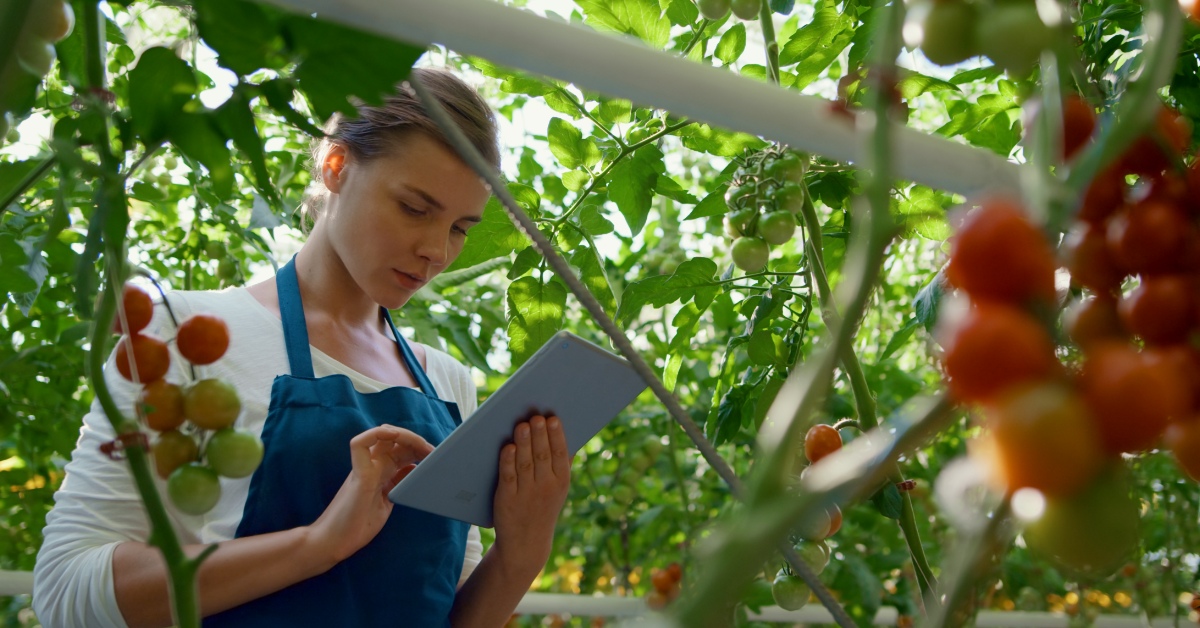Digital transformation, ultra-broadbandBroadband The term broadband, in telecommunications, generally refers to the transmission and reception of information data at a connection speed of over 144 kb/s. Broadband organises different channels, conveying different content in the form of data, such as Internet radio, animation, audio files and high-definition video. and agriculture: here is why fibre optics is a key asset for the agri-food sector.
After Industry 4.0Industry 4.0 This term refers to the fourth industrial revolution and envisions a production process based on the connection between physical and digital systems, complex analyses through Big Data and real-time adaptations. In other words: use of web-connected machines, analysis of information from the web and the possibility of more flexible management of the production cycle. Enabling technologies range from 3D printers to robots programmed for certain functions, via cloud-based data management and data analysis to detect production weaknesses and strengths. It is the IoT applied to industrial production., it is time for Agribusiness 4.0: sustainable, up-to-date and… digitised!
Digital transformation is continuing to advance and is even sweeping the sector most closely connected to analogue, namely the agri-food industry.
When we think of the primary sector, the first thing that comes to mind is probably a field covered with neatly arranged rows of fruit waiting to be harvested. Expanding this vision, we could add a well-structured farm to the picture, equipped with cutting-edge machinery that can process large quantities of product, perhaps using environmentally friendly techniques.
Yet even in this panorama, somewhere between bucolic life and a quasi-industrial setting – a truly physical and real scenario in short – there is room for considerable improvement through the use of ultra-fast connectivity.
We discover all the benefits and strategic importance of digitisation in the primary sector:
- Fibre optics and the agri-food sector: not just sales and logistics
- Optical fibre and artificial intelligence for implementing predictive and control models
- More accurate product traceability
Fibre optics and the agri-food sector: not just sales and logistics
FTTHFTTH “Fiber to the Home” is the technology that connects POPs, located in exchanges, to end users’ property units with fiber optics. fibre optics is a valuable asset for modern agri-food supply chains, since they can benefit from it at every stage of the production process. At Open Fiber we are so conscious of this that, in May 2020, we signed an agreement with Confagricoltura to accelerate the deployment of ultra-broadband in Italian agribusinesses. Needless to say, the most digitised businesses benefit in many ways: not only from a competitive and logistical standpoint during distribution, but also during production thanks to the application of new technologies.
While, until recently, InternetInternet The word comes from the fusion of the English terms international and net, i.e. international network. This term refers to the worldwide computer network that users all over the world can access via a computer to transmit and share data and information. use in the agri-food sector was mainly connected to online sales and the management of dedicated e-commerceE-commerce A contraction of ‘Electronic Commerce’, i.e. the buying and selling of goods and services directly on the web or via e-mail without going to shops and department stores., today new and more interesting scenarios are available thanks to the possibilities offered by ultra-broadband.
Currently, one can easily imagine a digitised farm as a functional assembly line in which the processes of harvesting, sorting and dispatching products are remotely managed almost automatically and supervised by the watchful eye of specialised managers. But what if we told you that this is just a small phase of a whole longer process?
In fact, when it comes to agribusiness, productivity begins long before harvest and sale.
Optical fibre and artificial intelligence for implementing predictive and control models
Anyone who has worked in the agri-food industry is only too familiar with how much an unforeseen event – the spread of a pest or a period of drought, just to name a few – can affect product quality and quantity. Periods of severe famine are even remembered in the history books as events that changed the social structure of entire regions!
It is therefore a fundamental step to make production chains more responsive to events of this nature.
Today, the use of technology can greatly help farms in improving in quality and efficiency.
In particular, satellite monitoring can facilitate producers to monitor the status of fields or grazing areas; IoTIoT The ‘Internet of things’ is the idea of networking any device with a power button. Paradoxically, this can be anything, from mobile phones to coffee machines, washing machines, refrigerators, vacuum cleaners, headphones, lamps, and wearable devices. This also applies to internal machine components, such as sensors in a car. This immense network of connected objects could improve many aspects of our lives: imagine a refrigerator which, by reading the barcodes of the products it stores, could tell us what is about to expire and what has run out, allowing it to suggest a shopping list. A coffee machine that switches on at the right time knowing the alarm time set on your smartphone, a car that suggests the best route to take based on traffic information sent by other cars. sensors enable producers to collect data about temperature, humidity, etc.; Artificial Intelligence algorithms permit the analysis and cross-reference of collected climate data with field status or grazing areas data, developing predictive models that are more accurate than simple weather forecasts, and allowing companies to put protective measures in place, so as to prepare for events that would otherwise damage months of work.
However, this is only feasible if collected data can be quickly and reliably cross-referenced with the latest data, which FTTH fibre – with its transmission speed of up to 10 Gbps – is capable of doing.
More accurate product traceability
Identification codes, traceability and compliance with safety regulations: when it comes to what we eat, no control is too meticulous.
So why not think big? Two words: digitisation and blockchain, a combination that can improve agri-food safety and provide unambiguous tracking of the products that arrive on our tables, in addition to conveying a wealth of detailed information about them.
This not only includes information on the areas of origin and production standards used, but also details on the transport temperatures of the products on the road and the humidity level of the storage locations, all managed through a secure platform where the data cannot be manipulated.
This adaptation could also benefit producers themselves, who could more easily build up a recognisable image and score reputation points. Not to mention the reduction in the risk of food fraud and waste: in the case of a contaminated batch, for example, it would be possible to accurately trace only unsafe products, avoiding the need to send healthy food whose origin cannot be identified to landfill. This makes the supply chain not only safer, but also more sustainable.
How many of these ultra-fast Internet-based applications for the agri-food sector were you already familiar with? Open Fiber is working to make the sector more efficient, safe and environmentally friendly and you too can monitor the progress of this work on the dedicated page.








